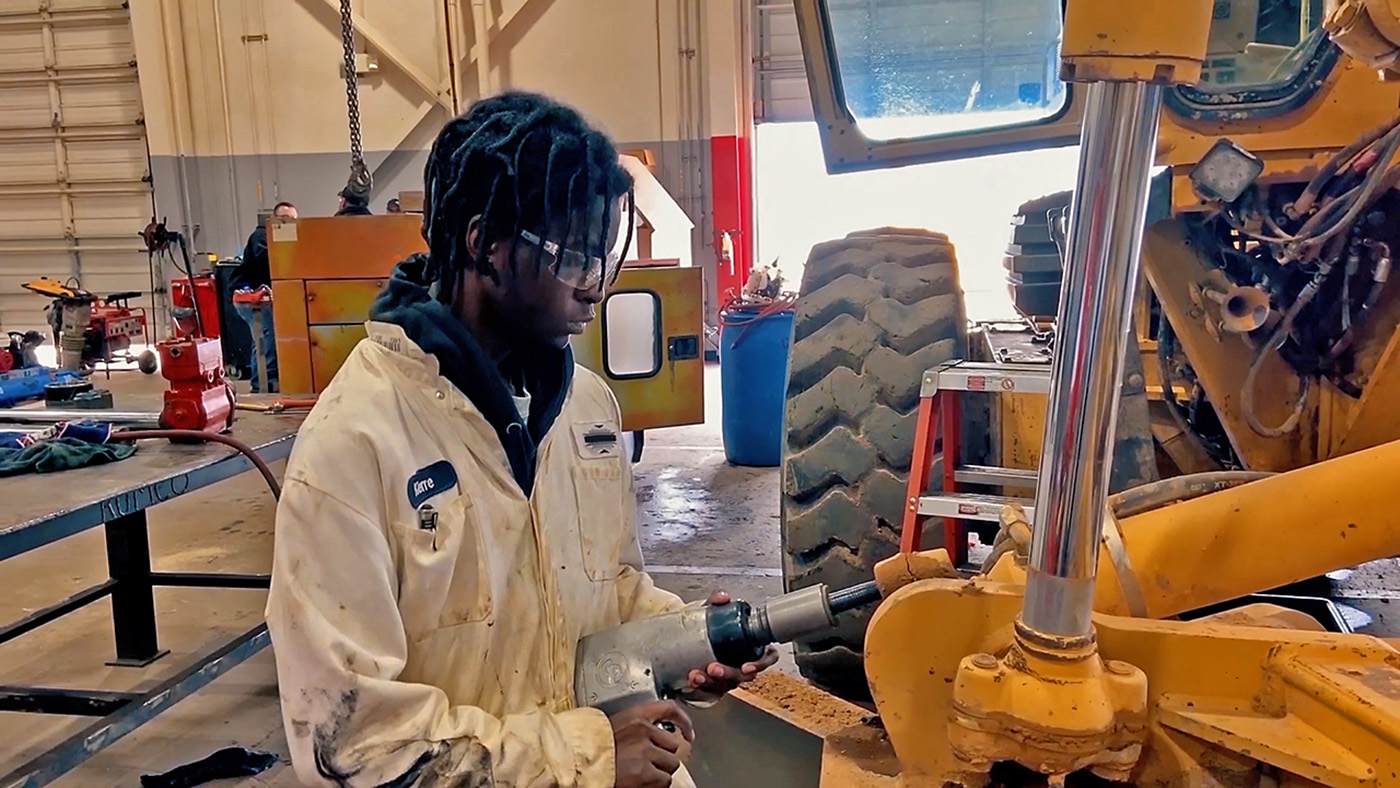
Moving Innovation Forward: A New Round of Every Day Counts
The Federal Highway Administration (FHWA) rolled out seven new innovations in the latest round of its Every Day Counts (EDC) program. The innovations selected for EDC round seven (EDC-7), which takes place during 2023 and 2024, focus on helping transportation agencies improve safety for all users, build a sustainable infrastructure for the future, and grow an inclusive workforce.
Watch this FHWA EDC-7 overview video for a brief introduction to the new round of innovations.
Credit: FHWAEDC is a State-based program that promotes market-ready and proven but underutilized innovations that merit widespread implementation. Every 2 years, FHWA asks State transportation agencies, local governments, Tribes, industry groups, and other stakeholders to help identify transformative, game-changing innovations that can have a national impact on the transportation system. The EDC-7 call for ideas yielded more than 70 suggestions.
In line with the U.S. Department of Transportation’s recent commitment to expand the EDC model to more modes of transportation, some of the innovations chosen for EDC-7 were selected with multimodal State transportation agencies in mind and are of interest to both transit and rail agencies.
FHWA will host a virtual summit in February 2023 that will bring together transportation professionals from across the country for a more in-depth look at the benefits of each innovation. State Transportation Innovation Councils will then select innovations to adopt based on their State’s program needs. EDC deployment teams offer a variety of resources and technical assistance to help agencies accelerate the implementation of their adopted innovations during the 2-year cycle.
Improve Safety for All Users
Nighttime Visibility for Safety
The nighttime crash fatality rate is three times the daytime rate. Enhancing visibility along corridors, intersections, and pedestrian crossings can help reduce fatalities. This initiative promotes traffic control devices and properly designed lighting to improve safety for all users.

Enhanced lighting at a rural intersection.
Credit: FHWANext-Generation TIM: Technology for Saving Lives
More than 6 million crashes occur each year in the United States that put responders and other vulnerable road users at risk. Next-generation traffic incident management (TIM) programs promote emerging technologies such as emergency vehicle lighting and queue warning solutions. These and other tools can advance safety and operations to mitigate incident impacts.
Build a Sustainable Infrastructure for the Future
Integrating GHG Assessment and Reduction Targets in Transportation Planning
Transportation is the largest emitter of greenhouse gases (GHG) in the United States. This initiative provides resources to help agencies quantify GHGs and set goals to decrease motor vehicle, construction, and life-cycle emissions through planning and project development.
Enhancing Performance with Internally Cured Concrete (EPIC2)
Cracking in concrete is a limiting factor in achieving long-term concrete performance. Internal curing mitigates shrinkage cracking and has the potential to substantially extend the service life of concrete bridge decks and enhance the performance of pavements and repairs.

Environmental product declarations reveal the environmental impacts of highway construction materials.
Credit: FHWAEPDs for Sustainable Project Delivery
Construction materials such as concrete and asphalt have environmental impacts during their life cycle. Environmental product declarations (EPDs) document those impacts. This tool helps States support procurement decisions and quantify embodied carbon reductions using life-cycle assessments for sustainable pavements.
Grow an Inclusive Workforce
Rethinking DBE for Design-Build
Many design-build contracts do not adequately provide opportunities for disadvantaged businesses. New practices are available to support the effective integration of program requirements to help small, disadvantaged businesses compete for design-build contracts.

Strategic workforce development strategies can help identify, train, and place skilled workers in jobs that support the highway system.
Credit: FHWAStrategic Workforce Development
The demand for highway workers is growing, and emerging technologies require new skills. This innovation helps stakeholders improve their ability to identify, train, and place highway construction workers. The focus will expand to rural and Tribal communities to increase career opportunities.
—MORE INFORMATION
Visit the EDC website.
Contact Julie Zirlin, FHWA Program Manager for Every Day Counts, for more information.
Notice: The U.S. Government does not endorse products or manufacturers. Trademarks or manufacturers’ names appear in this article only because they are considered essential to the objective of the document.
Recommended Citation: U.S. Department of Transportation, Federal Highway Administration - Washington, DC (2023) Innovator Newsletter, January/February 2023, Volume 16 (94). https://doi.org/10.21949/1521898



